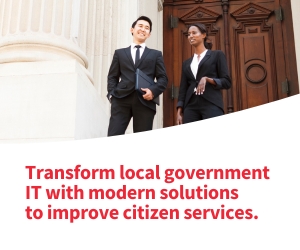Modern Voice Harnesses AI for Robust Capabilities
Modern voice isn’t the tethered, analog experience it used to be. Voice is a critical component for frontline emergency services agencies, not only because it is the most resilient form of communication but also because modern voice apps can act as mobile platforms, integrating all kinds of data.
These days, cutting-edge voice turns a call into an artificial intelligence-powered collaboration tool before, during and after an emergency. Next-generation voice apps deploy powerful capabilities for the field, including push-to-talk technology, AI-powered video, live transcription, background noise reduction and file sharing, all in one platform.
Back at the office, agencies can deploy voice tools that enhance collaboration. While real-time voice is critical in an emergency, it’s just as important for connecting disparate teams for planning and training as well as coordination in the aftermath of an event. By using one common platform that combines file sharing, phone, messaging and video meetings, first responder organizations can ensure that they’re ready in the event of a disaster and prepare to navigate communications logistics once the dust settles.
READ MORE: FirstNet broadband makes a difference for first responders.
Scalable Solutions Adapt to the Needs of First Responders
Beyond the front-end features, in practical terms, agencies should be looking for solutions that combine scalability, redundancy, quality and security — all of which build the framework for a reliable and resilient voice platform.
IT teams should expect immediate transitions to backup systems and be able to scale to twice their capacity when demand floods communications platforms. Security must be holistic across all communications, including elements such as access and vulnerability management, incident response, fraud monitoring, audits and third-party testing.
Agency needs vary, and there are always competing priorities, but one thing remains true: Voice is just as important as any other communications tool, especially when dealing with real-time needs that first responders face across the country.
First responders know better than most how important foundational technologies such as voice are in their day-to-day operations. Voice has a role to play in innovating communications and serving as a reliable resource to those helping manage emergencies every day, whether that means coordinating responses or sharing real-time information with people who need it the most. As state and local emergency services modernize, voice must be a part of the conversation.











